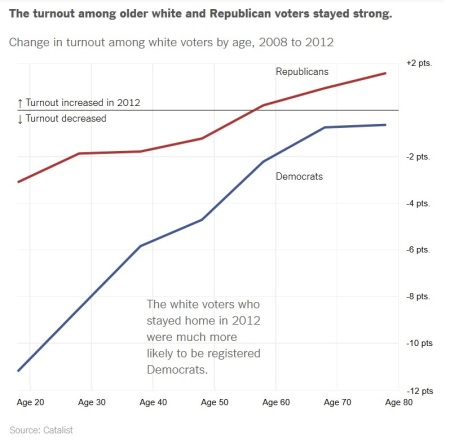By Robert A. Vella
Political analysts all over the world keep saying that the U.S. presidential election of 2016 is the most unpredictable in a very long time, and rightly so. The rise of economic populism and nationalist sentiments have cut across traditional political boundaries, and have opened up wide fissures within the two major parties. Voter enthusiasm has shifted disproportionately between a growing number of factions amidst an overall decline in civic participation by the general population. At the start of the primary election season, blowhard businessman Donald Trump was mocked as a serous candidate; now, he is the presumptive nominee of the Republican Party. The Democratic Party’s chosen heir-apparent to President Obama, establishment centrist Hillary Clinton, was projected to quickly defeat progressive challenger Bernie Sanders; but, the race went to the very end and possibly beyond as the party currently struggles to unify.
However, fresh insightful analysis from The New York Times has – in my opinion – put the 2016 election into much clearer focus. In its data-driven reexamination of conventional political wisdom from journalists and party operatives who rely more on intuitive and inexact sources, the NYT article both challenges key assumptions of the new 21st century American electorate and offers quite credible alternative explanations. Specifically:
- Assumption #1 – demographic changes in the U.S. have made a white-oriented Republican strategy an unwinnable one in presidential elections.
- Assumption #2 – the migration of white voters from the Democratic Party to the GOP has been a national (not regional) phenomenon.
- Assumption #3 – the American electorate is becoming younger, more diverse, and better educated.
- Assumption #4 – voter turnout among blacks and Hispanics have significantly increased.
- Assumption #5 – white voters abandoned the Democratic Party en masse with the nomination of Barack Obama in 2008.
- Assumption #6 – Mitt Romney lost in 2012 because of the Missing White Voter Theory.
All of these assumptions have been refuted by this new analysis. Among the findings, three items stand out:
- Demographic changes in the U.S. have not significantly altered the composition of the electorate because whites and older citizens are voting at higher rates than are minorities and younger people.
- The migration of white voters from Democrats to Republicans has primarily occurred within southern states.
- The decline in voter turnout has disproportionately hit better-educated young liberals and progressives who would otherwise support Democratic candidates.
These two graphs best illustrate these conclusions:
The NYT analysis suggests the following for the 2016 election:
The larger number [percentage of the electorate] of white working-class voters implies that Democrats are far more dependent on winning white working-class voters, and therefore more vulnerable to a populist candidate like Mr. Trump. [clarification by The Secular Jurist]
This conclusion matches most opinion polls indicating that the Democrats would do better against Trump if they ran a populist like Bernie Sanders against him rather than an establishment candidate like Hillary Clinton. The NYT analysis also presents a troubling dilemma for Clinton. If she veers to the left in an effort to woo stubborn Sanders supporters, she risks losing moderates to Trump. If she runs hard to the center, she risks alienating those idealistic young people altogether. Another complicating factor for Clinton is that her strongest base of support – blacks, Hispanics, and other minorities – are heavily concentrated in the South where the Republican electoral advantage is greatest. Still, Trump is such a divisive candidate that at least some establishment Republicans will support Clinton instead; and, that remains an un-quantified wildcard upon which the 2016 election might inevitably be decided.



I might be completely wrong, but the thought of any moderates or Bernie supporters turning to trump just seems to be too ludicrous to even entertain. Now that Obama is free, I think he’s going to humiliate the man… and rightly so.
LikeLike
You could very well be right. The election will be the final arbiter. The supposition of moderates (i.e. working class whites) or Bernie supporters turning to Trump was presented conditionally on the Clinton campaign strategy. However, I personally know people from both groups who say they will either not vote for Clinton or vote for Trump outright; and, I live in a very blue Democratic state (Washington). How indicative these anecdotes are to the larger electorate, I do not know.
LikeLiked by 1 person
I think if the polling is close in any state (a normal state, meaning not Alabama, Kentucky, Mississippi, South Carolina, etc) then that’ll be a huge motivator for people to turn up to vote against Trump. That being said, I suspect the turn out in states like yours, which will remain blue, will be very, very, very low for the reasons you mentioned.
LikeLiked by 1 person
Personally, I can’t WAIT to see what Trump’s gonna do as commander and chief of the U.S. military. A more trust worthy, competent fellow I can not think of to have such an important job. God bless America, and God bless freedom!
LikeLiked by 1 person
It would be like sitting helplessly in one of those kid trains they used to run in city parks years ago… except that it would be driven by an insane operator.
LikeLike